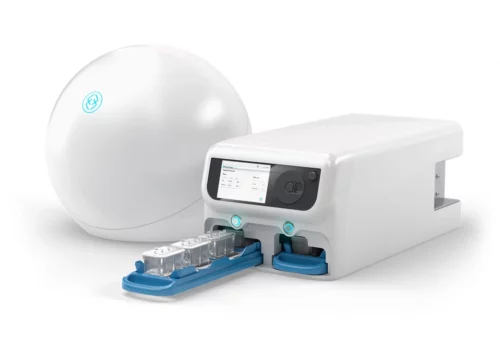Organ Model: Intestine (Caco2)
Application: ADME
How Organ-Chips Were Used: The authors of this publication assessed the utility of a Caco2 Intestine-Chip to study the effect of permeability enhancers (PEs) on the absorption of peptides (Insulin and Octreotide) in the intestine. The authors observed a much more modest permeability enhancement in the Chip model compared to transwell models, which is in line with observations in ex vivo and in vivo preclinical models. These data indicate that microfluidic chip models are well suited to bridge the gap between conventional in vitro and in vivo models.
To learn more about these findings, view our webinar “Organ-Chips 201: The Importance of Flow, Stretch, and Stroma for in vitro Modeling”.



